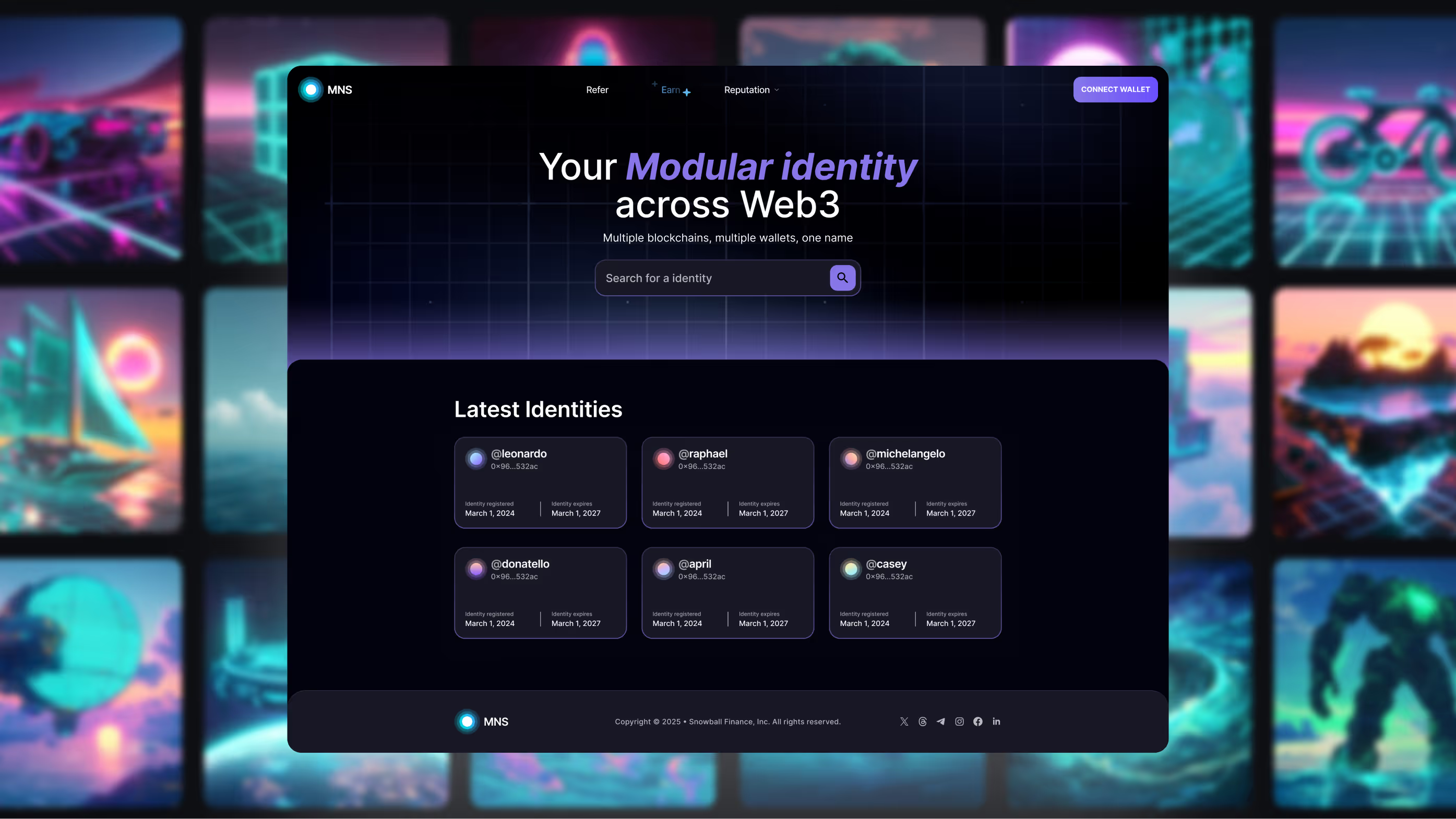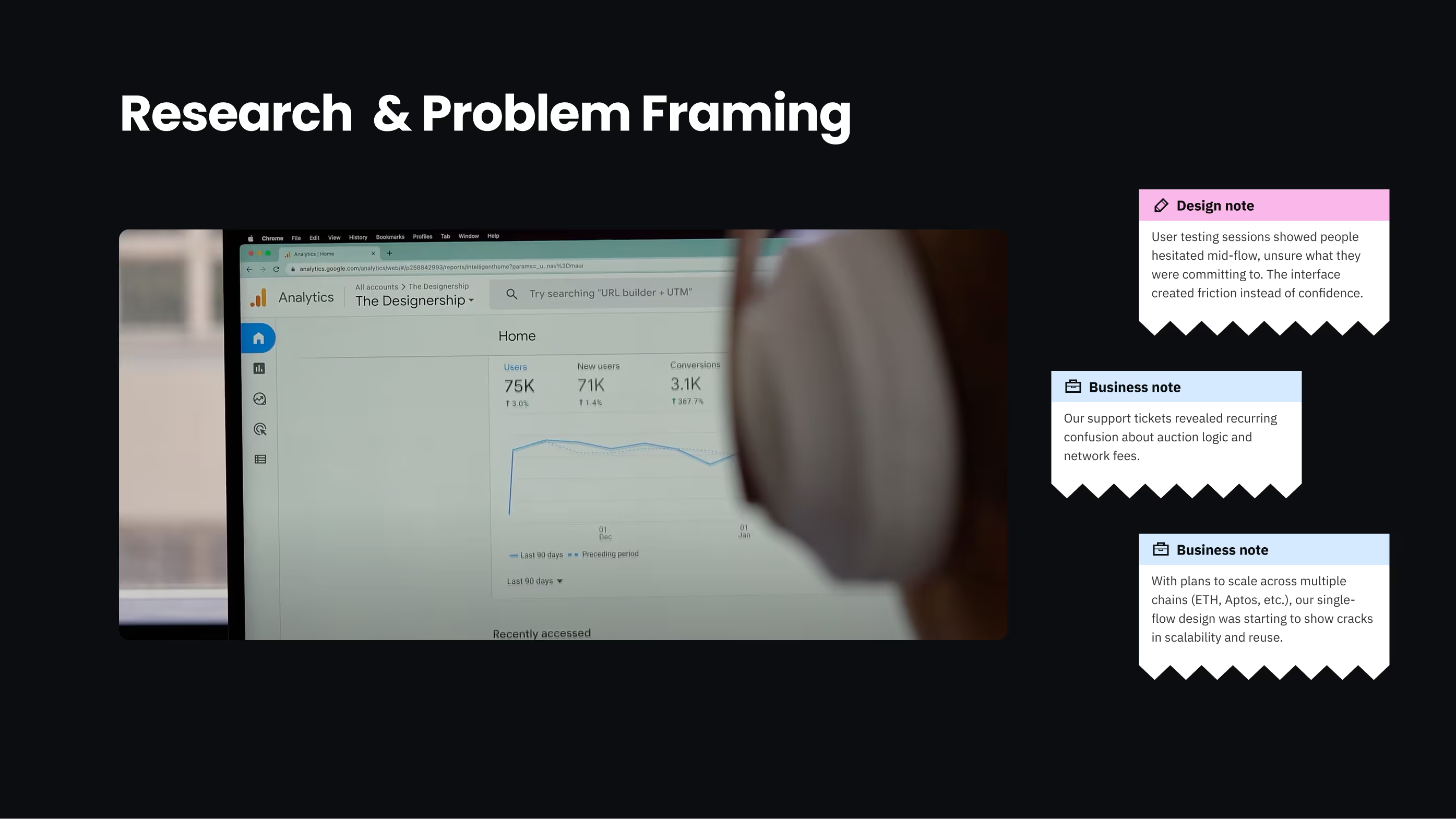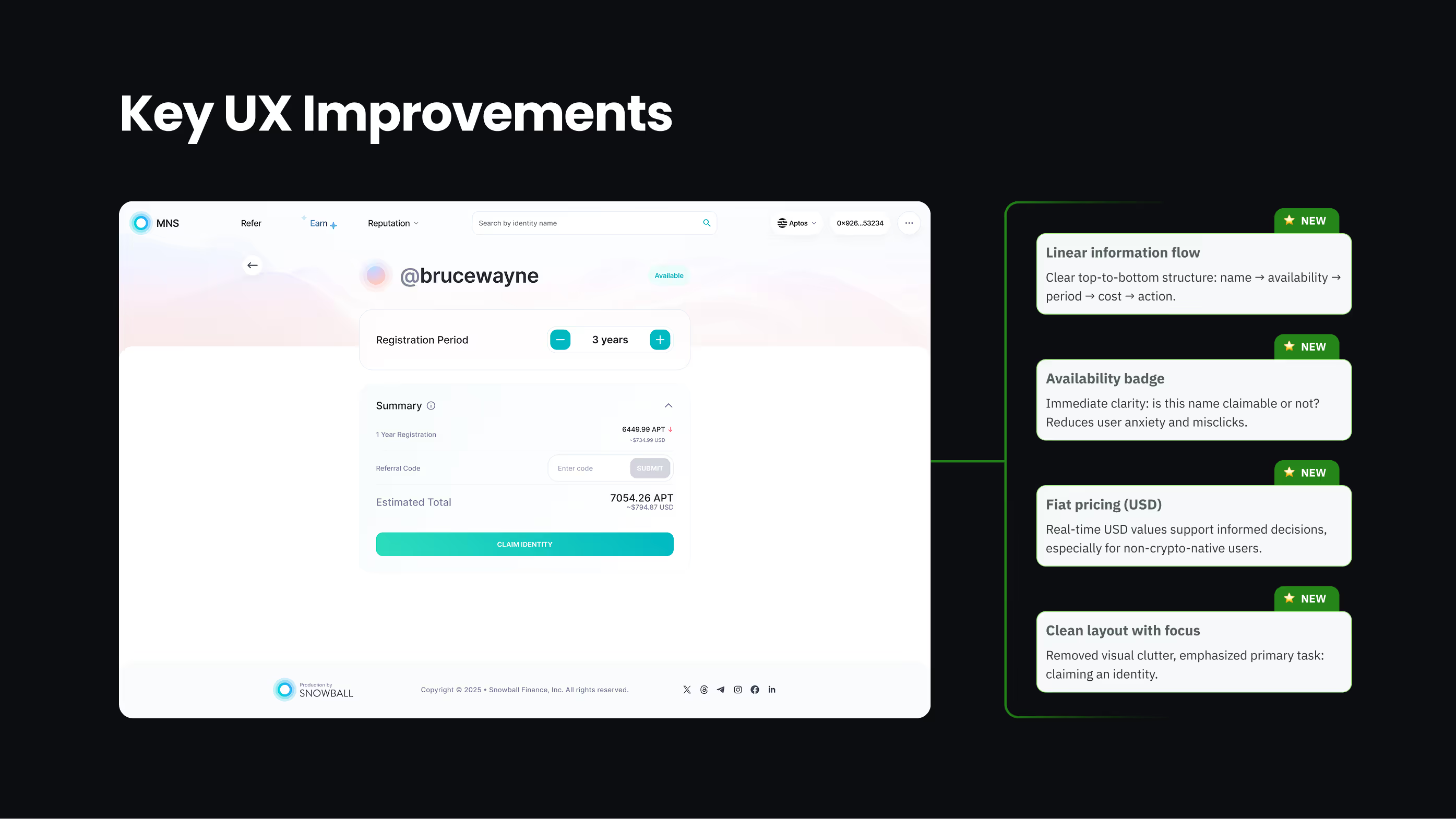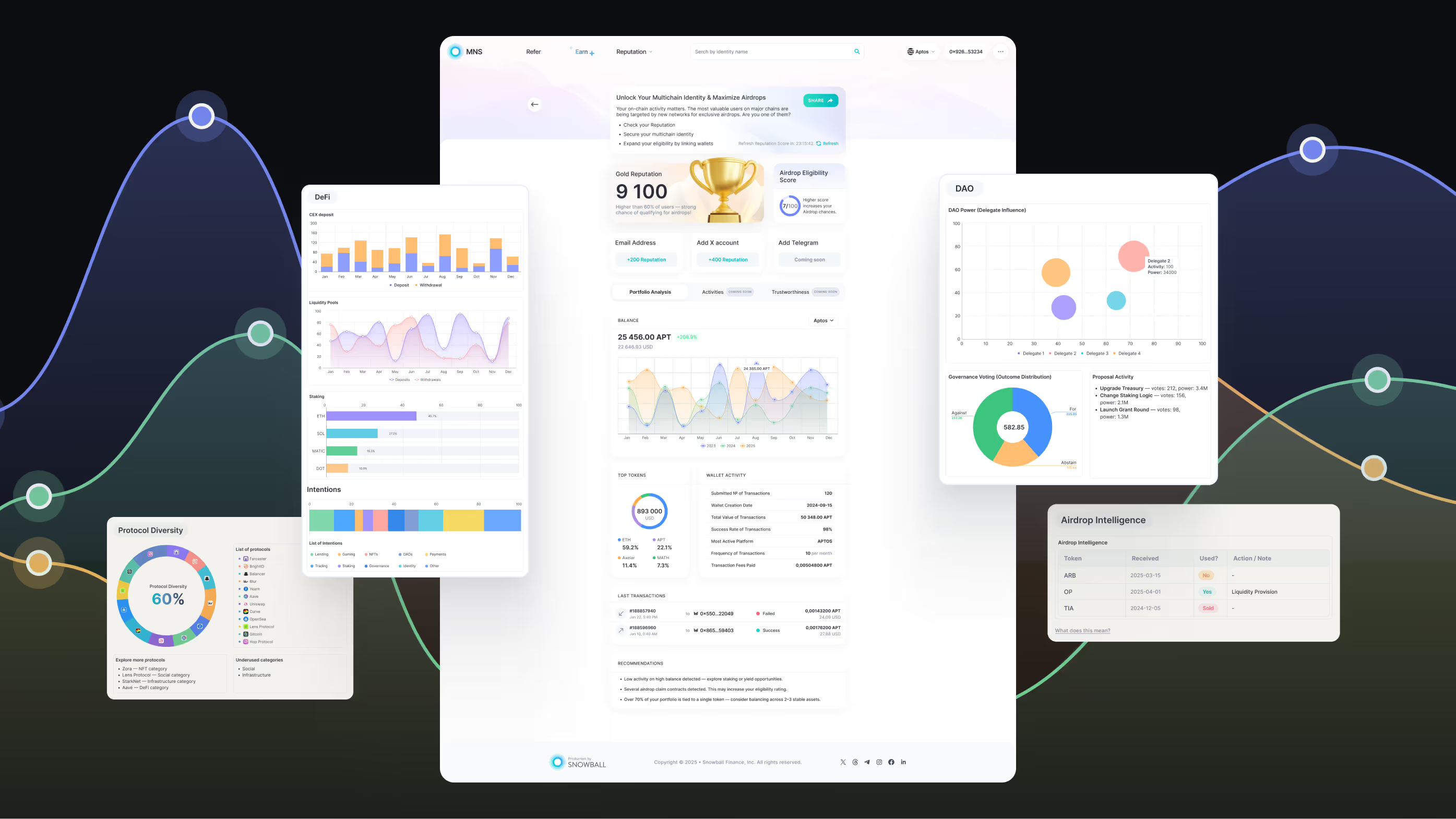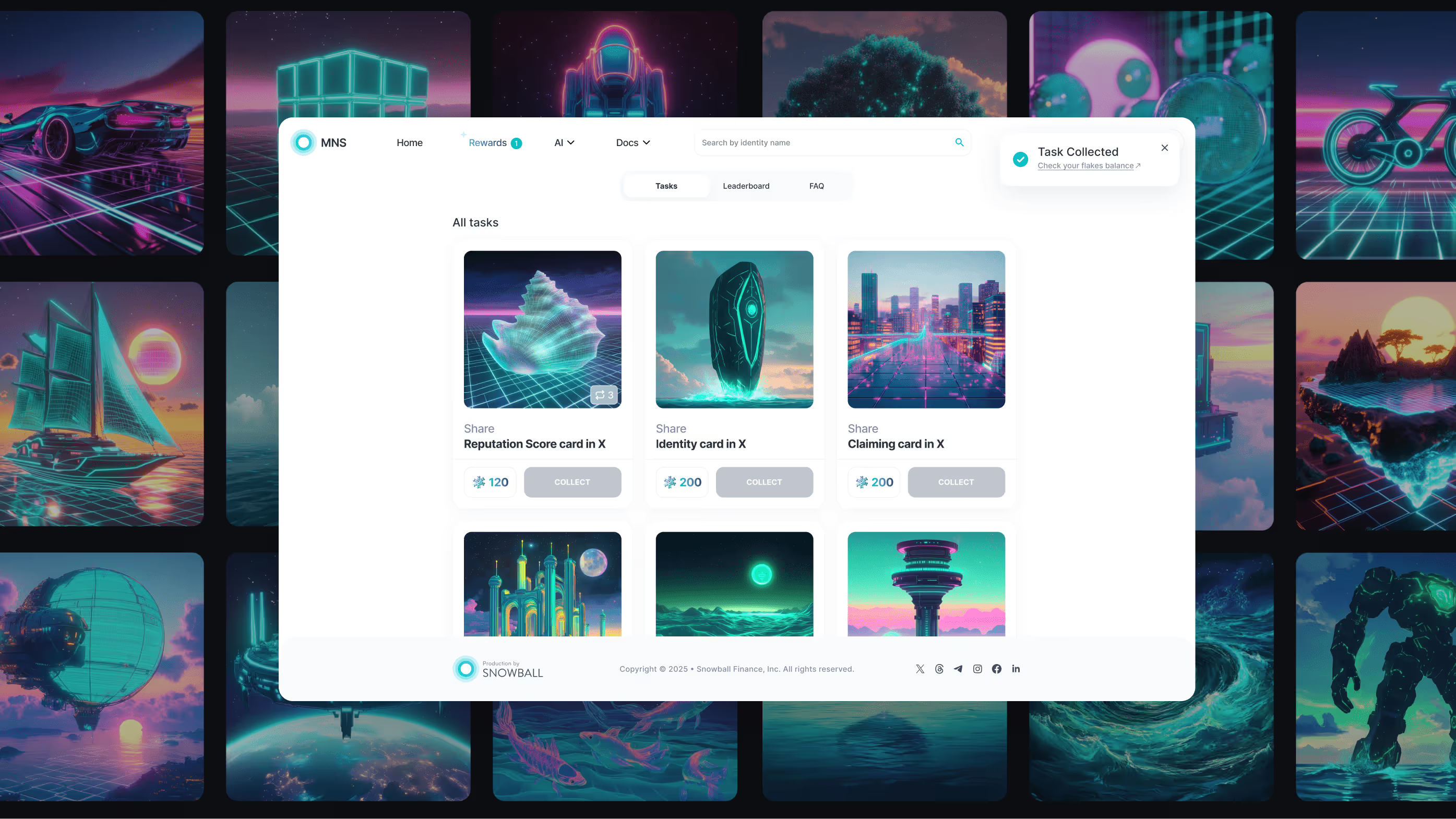Project Overview
MNS (Modular Naming System) is a multi-chain identity protocol for Web3. It allows users to secure a single name across wallets, earn reputation, and participate in AI-enhanced utilities — all under one consistent brand.
My Contributions
End-to-end product design, Website & Web App, Marketing assets, Pitch Deck design, Search UX, Reputation system UI, Modular wallet linking, Light/dark modes,
tools
Figma, ChatGPT, Google Analytics, Hotjar.
